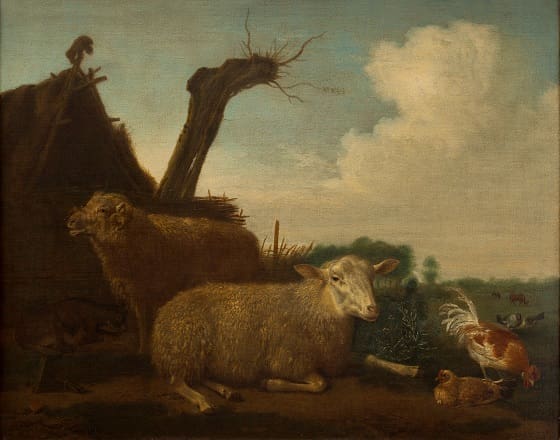Unknown. Manner of Adriaen van de Velde
Dutch landscape with sheep, ram, goat, and poulty in front of a hut, 1658
Oil on canvas, 45,5 x 56,7 cm.
Inventory number: 0057NMK
Bought in 1903 in Paris
Lying in front of a fold is a sheep with a bleating ram behind it. Two pigeons and two hens have gathered to the right of the sheep. One of the hens appears to be strutting around in search of food, and a black pig can be spotted lying down near the sheepfold in the background. Behind the hens and pigeons, the scene stretches out to depict a meadow with grazing cattle.
This painting was once attributed to the Dutch artist Adriaen van de Velde, whose outdoor studies are considered to have played a key role in the evolution of realistic Dutch landscape painting in the mid-1600s. Following a technical and art historical assessment by experts, however, this particular work is no longer attributed to van de Velde. Nevertheless, the true progenitor of this painting must have possessed a thorough familiarity with van de Velde’s production of paintings, and it is possible that the artist may have been associated with van de Velde’s studio as an apprentice.


